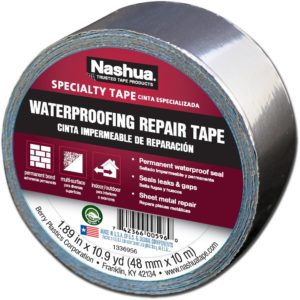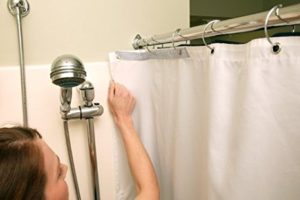
Having a leak in your home is not ideal, in fact, it can be a nightmare. Obviously, you will want to get it fixed as soon as possible. In some cases, calling out a plumber is the road you may have to go down. In other, less serious cases, there are ways in which you can do it yourself.
The way in which you treat the leak depends on the nature and source of the leak found in your home. The the leaking is coming from a joint, you will need to tighten the joint. If the leak is from a pipe, this will require a little more effort.
Fix a Pipe

Ultimately, if a pipe is leaking, you will need to remove the section which is causing the leak and replace it with a new section. This is easier said than done, however.
Identify what material your pipe is. A threaded galvanized steel pipe unscrews from its fitting at one end and then tightens into its fitting at the other end. Alternatively, with a copper pipe the new section is required to be soldered in place.
Before doing anything, you should shut off the water valve to the pipe and then turn on the taps to release any water that is left in the pipes. You should make sure the pipe is dry before attempting to continue.
A Pipe Patch Kit

If you opt to do it yourself rather than calling on the help of a plumber, you should consider getting a pipe patch kit. You can find a patch kit, subtitle for plumbing leaks, at most DIY shops. This is used to essentially plug up the leak. The kits contain a rubber pad that is to be placed over the hole in the pipe and metal plates which compress said rubber pad over the hole. A patch kit is a quick and easy fix, which can even be used on a permanent basis if the only problem with the pipe is the hole and the rest of it is okay.
If you are having trouble finding a patch kit, you can make your own using a piece of heavy rubber and a C-clamp. You could also use a hose clamp coupled with a rubber patch.
Waterproof Tape

An alternative, but a more temporary by nature fix to a patch kit, is the utilisation of waterproof tape. This is great for smaller holes and to hold you over until you can get a plumber out.
Before applying the tape, you need to make sure the area of the pipe is dry enough so that the tape doesn’t come off. When applying the tape, start the tape about 2 to 3 inches away from the hole and extend it the same distance beyond the hole.
Bath and Shower Leaks

The most common type of leak is the ‘splash leak’, which is where the water escapes past the shower curtain or door. This may sound like a menial leak, but it cause cause quite major damage to your bathroom via water seeping into the subfloor where the floor meets the shower or the bath. The flooring in your bathroom can begin to come up or loosen, or if you have wooden floors, they can begin to rot – all of which requires a huge tear out of the flooring which is an expensive replacement process.
To fix this, make sure that the sliding doors are overlapped correctly when you close them. If you have a shower curtain rather than a shower door it is advised to keep the curtain on the inside to create a seal. You should also consider adding a splash guard.
Part of the service we offer at Premier Lofts, we give the place a full testing before handing it over to you. In addition to a deep clean of your premises, we check for any issues relating to plumbing or leaks or anything that may come up. We want to handover your new loft conversion as though it is 100% brand new and that is how we have established our company over the last 30 years.


